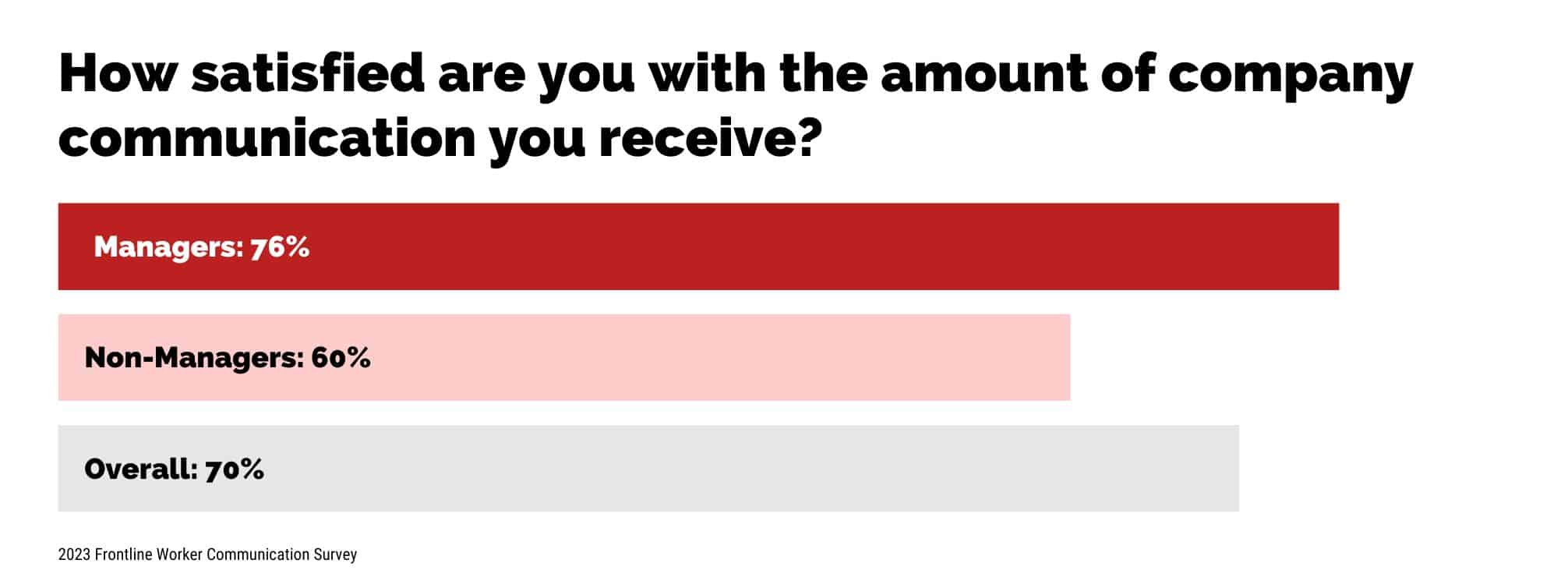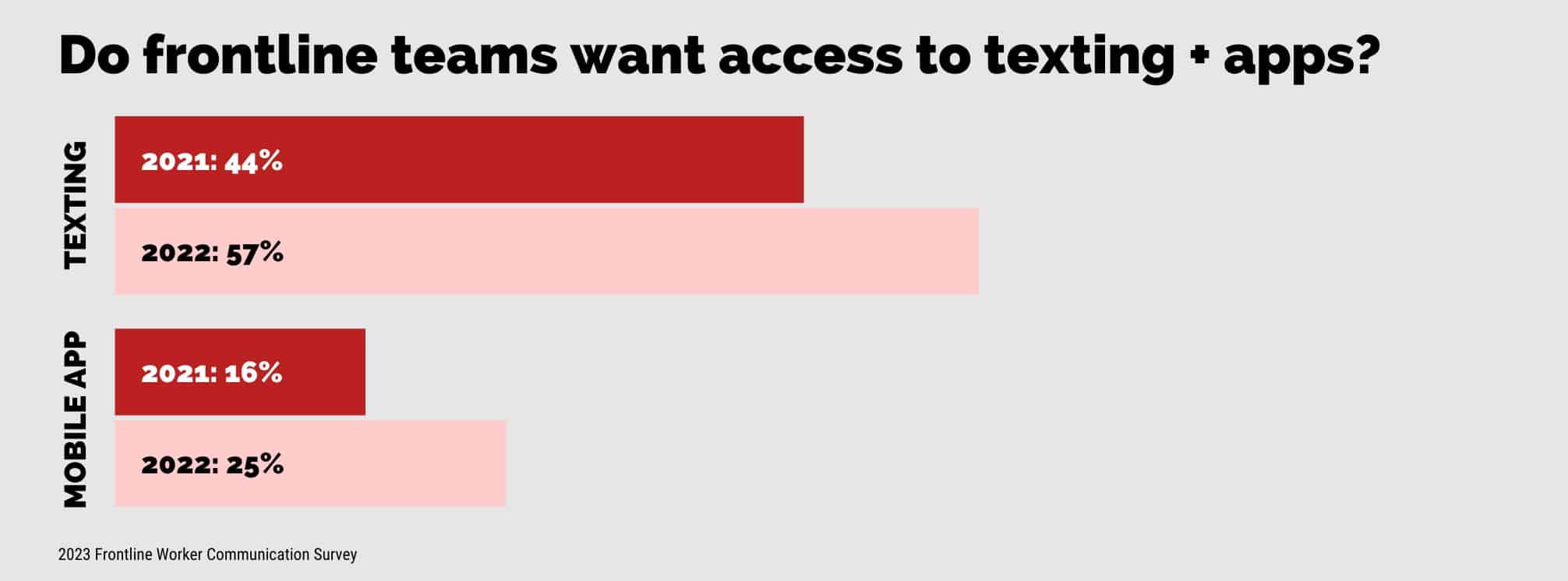Who Are Frontline Workers & How to Engage Them
Frontline workers, often referred to as deskless employees, continue to be the backbone of our society, especially as we navigate the complexities of 2025. These individuals are pivotal in sectors like healthcare, retail, logistics, and public safety. As we move further into 2025, understanding and effectively engaging these workers remains crucial for organizational success.
In 2025, the definition of frontline workers has evolved. They are not only those who interact directly with customers but also individuals who support critical operations behind the scenes. This broader perspective acknowledges the diverse roles that contribute to essential services.
Who are frontline workers?
Frontline workers are the unsung heroes of our companies. They work in public-facing roles, providing essential services to a company’s customers. That means they play a crucial role in keeping our society running smoothly, especially during challenging times like COVID-19 where frontline workers finally got some time in the spotlight.
These dedicated individuals are the backbone of our communities, and their contributions are invaluable. Let’s dive into a few examples of frontline workers:
- Healthcare professionals. Doctors, nurses, and other medical staff are examples of frontline workers. These workers are deskless, meaning their role mostly doesn’t require them to use a computer (aside from charting), but they are “frontline” because they directly interact with patients.
- First responders. Firefighters, police officers, and paramedics are other examples of frontline workers.
- Retail workers. Any role in a retail store, including clothing shops and grocery stores, is frontline. Although healthcare workers and first responders got a lot of love during the pandemic, many grocery store workers also were risking their lives to provide an important public service.
- Delivery personnel. Unlike other parts of the logistics and supply chain industry, our couriers, postal workers, and delivery drivers are likely to interact with customers even if only in a small way. This makes them count as a frontline worker.
- Public transportation staff. This includes bus drivers, subway operators, and Taxi/Lyft/Uber drivers.
These examples barely scratch the surface, as frontline workers exist in various other fields such as sanitation, education, food service, and more.
Why Frontline Communication Needs a 2025 Refresh
Traditional communication methods no longer meet the needs of a dispersed, mobile workforce:
-
Workvivo found that email-based communication often fails to reach frontline teams effectively.
-
Axios HQ emphasizes the role of managers as a critical link — when empowered, they contextualize top-down messages for frontline realities.
-
Great Place to Work stresses the importance of multi-channel communication: combining mobile apps, digital signage, team huddles, and posters ensures everyone stays informed regardless of access barriers.
What Counts as Frontline Services? Examples That Define the Term
Frontline services are roles performed by employees who interact directly with customers, communities, or essential operations—typically outside traditional office settings. These are the workers who keep society and industries running, often without the recognition or flexibility of desk-based employees.
Common Frontline Services Examples
Healthcare & Social Care
Nurses, doctors, paramedics, and caregivers are among the most recognized frontline service professionals. Their work requires immediate, hands-on interaction with patients, making them critical in maintaining public health and well-being.
Education & Childcare
Teachers, daycare staff, and special education professionals engage learners directly, ensuring that education and developmental needs are met in classrooms, childcare centers, and community spaces.
Public Safety & Government Services
Police officers, firefighters, emergency responders, and government officials provide essential frontline services by ensuring community safety, enforcing laws, and delivering public resources directly to citizens.
Transport & Delivery
Bus drivers, train conductors, flight attendants, and courier workers represent frontline services that keep people and goods moving. In 2025, logistics and transport roles have become even more vital due to the surge in e-commerce and urban mobility solutions.
Food Supply & Retail
Grocery clerks, restaurant servers, chefs, and food manufacturing employees serve consumers directly. These frontline staff keep supply chains intact while ensuring communities have reliable access to food and daily essentials.
Residential & Public Services
Sanitation workers, postal service employees, and facility maintenance staff form the backbone of residential and civic infrastructure. Their frontline services ensure cities and neighborhoods remain safe, functional, and connected.
What are the types of frontline workers?
We can classify frontline workers in a few ways. This is important because the needs of frontline workers can be very different based on these attributes.
- Hourly vs. salaried frontline workers have vastly different needs. For example, hourly workers do not always have employee benefits unless they work a certain number of hours. Hourly workers also typically need to punch a clock and receive a schedule. These create vastly different communication needs.
- Whether or not an employee is a manager can also change their communication needs and even the channels a frontline employee has access to. Frontline managers are often responsible for cascading messages to their direct reports, creating a need for better comms training. Whereas frontline workers that aren’t managers may need better channels of communication and messages targeted directly to them.
- Union or non-union workers are another important distinction when communicating with the deskless workforce. Typically, you’ll see more union employees in fields that have a lot of deskless and frontline workers. You may need separate or distinct ways to communicate and share resources with these two groups.
[optin-monster slug=”mdvamo2sitvzi2dzeobf” followrules=”true”]
What industries have frontline workers?
While there are more types of deskless employees than we’ll cover here, frontline workers typically are in the following industries:
- Healthcare. Most healthcare employees are considered frontline workers because they interface with patients. Although nurses and doctors do need to use computers for charting, the majority of their work is spent with patients and in labs. However, a receptionist in a hospital or some non-clinical administrative staff are examples of deskbound workers in healthcare.
- Hospitality. Employees who work reception desks at hotels and casino staff are all types of frontline hospitality workers. But there are other types of deskless employees within hospitality such as housekeeping teams, hotel or casino security, and so on.
- Retail. Employees who work in stores are all frontline workers. This includes cashiers, store managers, and even district managers of larger retail franchises.
- Restaurants. Although back-of-house (BOH) employees are deskless workers, their front-of-house (FOH) counterparts fit the frontline worker definition better because they interact with patrons.
What are the top challenges of communicating with frontline teams?
In 2025, frontline workers face challenges such as increased workload, mental health concerns, and the need for continuous skill development. Addressing these issues is vital for ensuring their well-being and effectiveness. Reaching frontline workers can be very challenging for a few key reasons:
- They often cannot use phones on the floor. Whether they are in front of a patient or working in a store, most companies don’t want their frontline teams on their phones during their shift. This means that many companies haven’t invested in mobile-first solutions, even though these workers could access those channels on breaks, at home, and in other designated areas.
- They lack direct channels of communication. Many companies rely on printed signage for their frontline employees or a frontline manager who may have access to email and texting. But we know that messages get lost in translation, so it is important to invest in channels that frontline teams can access.
- We do not personalize content to their needs. The workforce is diverse. Each type of worker has different wants and needs, but companies need to invest resources in conducting thorough audience research to create communication that engages and activates their staff.
Building a culture of open communication in your organization is essential to overcome these barriers and ensure information flows seamlessly between managers and their teams.
Proven Communication Strategies for 2025 Frontline Engagement
Organizations leading in frontline engagement use a mix of technology and human-centered strategies:
-
Single Mobile Hub – A centralized app offering access to news, chats, documents, and leadership updates in one place. (Workvivo)
-
Device-Appropriate Access – Rugged smartphones, tablets, or shared kiosks ensure consistent access in tough work environments. (Workvivo)
-
Listen & Act – Regular pulse surveys and polls track sentiment, empowering organizations to act on real-time feedback. (Workvivo)
-
Push Notifications for Critical Alerts – Urgent updates delivered instantly to mobile devices prevent communication gaps. (Workvivo)
-
Humanized & Visual Content – Short videos, infographics, and photos simplify complex updates while keeping teams engaged. (Workvivo)
-
Communication Ambassadors – Peer leaders and frontline “ambassadors” help cascade information and build trust. (Great Place to Work)
-
Connect to Strategy & Belonging – Linking daily work to the bigger organizational mission creates meaning and motivation. (Workvivo)
[optin-monster slug=”ekjjbjv24kozzbizheer” followrules=”true”]
The state of frontline worker communication
Frontline workers have a vastly different experience of employee communication than those who work at desks all day. They typically have fewer channels available to them and the information they need to do their jobs is very different. Unlike deskbound workers, frontline workers receive a lot of operational communication every day.
So, we survey frontline workers every year to keep a finger on the pulse regarding how effective our internal comms are for this key audience.
Let’s dive into a few of the key trends from the survey.
Differences between frontline managers and frontline workers
The most notable trend in the data (from our 2021 and 2022 surveys) is the large discrepancy between the manager and non-manager experience. 16% more managers report being satisfied or extremely satisfied with the amount of communication they receive compared to non-managers on the front lines.
Why is this? Well, across the board, managers have more access to channels and communication. This likely means that managers feel more informed and more equipped to do their jobs. And satisfaction with communication seems correlated with managers also having higher engagement, retention, and trust.
Frontline worker gender differences
Men and women tended to not be very divided on the topics we covered in the survey. However, there were slight differences in their preferred topics.
- 25% of women want “just for fun” content versus 18% of men.
- 38% of women want “safety” content versus 31% of men.
- 21% of women want “state of the business” content versus 35% of men.
Although the gaps in topic preferences are not very wide, they do indicate that there are different values and priorities being placed on content based on audience demographics.
A shift toward mobile communication channels
Mobile channels have continued to gain momentum year over year.
- In 2021, 44% said they wanted texting as a channel. That jumped to 57% in our 2022 survey.
- In 2021, 16% said they wanted an employee app as a channel. That jumped to 25% in 2022.
Employees Want BYOD
Bring your own device (BYOD) policies are also gaining ground with frontline workers. In our 2022 survey, 82% of respondents said they would be willing to use a personal phone/device to receive work communication. This is because it makes their jobs easier and helps them manage the amount of tech they have.
Very few employees are wary of using their personal devices. And the main reasons that is the case is because they worry about the cost to themselves or they want more work-life separation.
[optin-monster slug=”xc87fe7zlzkjz2ijaj3t” followrules=”true”]
How can you reach, engage, and retain frontline workers?
Frontline workers are core to the success of organizations. By focusing on communication, engagement, and retention, you can dramatically improve churn, performance, and safety among your employees.
How to improve frontline worker communication
Great frontline worker communication comes down to a few things:
- Frontline Manager Communication. Gallup research shows that managers account for 70% of the variance in employee engagement. But we also know that most managers aren’t comfortable having tough conversations with their direct reports. This suggests that we need to heavily invest in manager training so they can be a stronger link in the chain of communication within organizations. One effective approach to enhance communication is by organizing structured team huddles. Learn more about the 5 elements of great team huddles to boost engagement and foster better team dynamics.
- How you measure internal communication. What you measure matters. Many internal comms professionals stop with counting clicks, likes, and comments. But these can be vanity metrics if they are all we look at. Communicators need to get better at measuring other KPIs like retention, increased safety, and time savings. This not only helps to prove the ROI of communication but also helps IC teams know if their strategies are making the right impact.
- Gathering employee feedback. One of the biggest missed opportunities for improving communication is asking employees what they think. Often, we get caught up searching for best practices or things that worked for other companies…but then we stop there. While it is great to test strategies and tactics that work for others, every organization and employee population is different. What works somewhere might not work for your teams. So, make sure you get employee feedback along the way.
- Understanding your audiences. Developing audience personas and empathy maps are a great way to tailor internal communication campaigns to your target audiences. This increases the relevancy of messages and helps to improve engagement over time.
How to improve frontline employee engagement
Improving frontline worker engagement doesn’t have to be complicated. For an employee to feel engaged, you must understand their needs. And all employees want to feel appreciated and valued, feel like their work is meaningful, feel fairly compensated, and believe they have opportunities to grow.
To improve engagement, focus on your benefits offerings, pay and bonuses, training and development, and employee appreciation.
How to improve frontline worker retention
Improving retention will naturally occur when you focus on better communication, engagement, and improvements to the employee experience. Employees want to work for companies that use transparency to build trust and treat their employees like human beings.
2025 Trends & Solutions to Engage Frontline Services
Digital Empowerment
According to Microsoft research, companies that enable at least 75% of their frontline workforce with digital tools see over 20% business growth. Mobile-first apps, shift coordination software, and real-time messaging platforms are becoming baseline requirements for effective frontline engagement.
Wearable Innovations
From smart helmets to fatigue-detecting wristbands, wearables are revolutionizing safety and performance tracking. These frontline technologies now monitor ergonomics, provide hazard alerts, and give managers real-time insights into workplace conditions.
[optin-monster slug=”ucyxtz2fxemh6aryl4gg” followrules=”true”]





